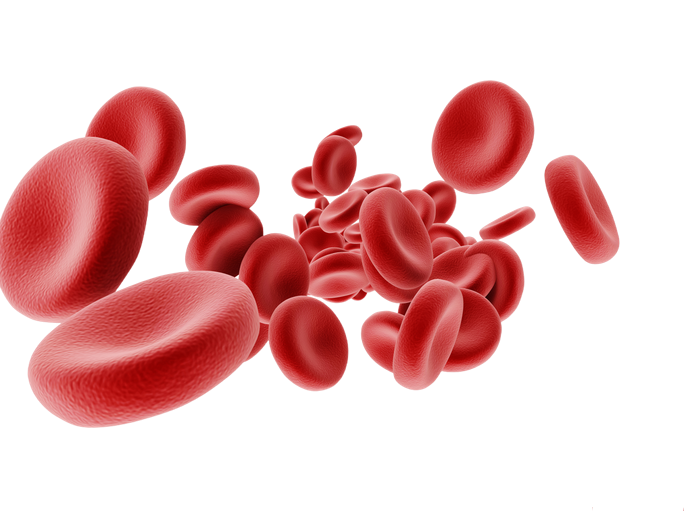Anyone can be a carrier of thalassaemia, but it is most prevalent in individuals who can trace their ancestry to;
South America, Caribbean, Mediterranean, Middle East, Africa, Asia and the Pacific Isles.
Thalassaemia is common in these regions because it was believed to be a revolutionary response to malaria


Thalassaemia forms part of the haemoglobinopathies, a group of genetic blood disorders affecting the production of haemoglobin.
People with thalassaemia produce either no or too little haemoglobin.
Thalassaemia is inherited from parents; it is not contagious, or a virus acquired from blood transfusions. It is passed on equally by men and women.
Inquiry established to examine the circumstances in which men, women & children treated by NHS in the UK were given infected blood or blood products.
To Identify apparently healthy people who may be at an increased risk of disease or condition, enabling earlier treatment or informed decisions.
All UKTS publications inc. the newsletter, national clinical standards, information on related issues, videos & thalassaemia information in your language
Feel like you’re the only one? Members stories on dealing with thalassaemia.
Thalassaemia is a characteristic of the blood. It is inherited, that is, it is passed on from parents to children, like hair, eye or skin colour. It is passed on equally by men and women. It is not contagious and will not turn into an illness.
There are two main types of thalassaemia: alpha and beta.
University College London Hospitals NHS Foundation Trust in collaboration with Whittington Hospital Foundation Trust, Imperial College Healthcare NHS Trust, St George’s University Hospitals NHS Foundation Trust and London North West University Healthcare NHS Trust.
University Hospitals Bristol NHS Foundation Trust
Northern Devon Healthcare NHS Trust
Royal Cornwall Hospitals NHS Trust
Royal Devon and Exeter NHS Foundation Trust
Royal United Hospitals Bath NHS Foundation Trust
Taunton and Somerset NHS Foundation Trust
Torbay and South Devon Healthcare NHS Trust
University Hospitals Plymouth NHS Trust
Weston Area Health NHS Trust
Yeovil District Hospital NHS Foundation Trust
Oxford University Hospitals NHS Foundation Trust
University Hospital Southampton NHS Foundation Trust
Luton and Dunstable University Hospital NHS Foundation Trust
Churchill Hospital
Royal Berkshire Hospital NHS Trust
Wexham Park
Portsmouth Hospitals NHS Trust
The QEII Hospital, Welwyn Garden City
East Surrey Hospital, Redhill
St Helier Hospital
Epsom Hospital
St. Peter’s Hospital, Chertsey
Sickle Cell and thalassaemia Warriors, Southampton
Sickle Cell and Thalassaemia Services, Luton
Address: The Poynt, 2-4 Poynters Road, Luton. LU4 0LA
University College London Hospitals NHS Foundation Trust in collaboration with Whittington Hospital NHS Foundation Trust, Imperial College Healthcare NHS Trust, St George’s University Hospitals NHS Foundation Trust and London North West University Healthcare NHS Trust
North Middlesex Hospital
Whittington Hospital
University College Hospital Trust
Royal Free Hospital
George Marsh Sickle and Thalassaemia Centre
St Ann’s Hospital (part of North Middlesex Hospital)
St Ann’s Road, London N15 3TH
Tel: 0208 702 6630
Sickle Cell and Thalassaemia Centre
17a Hornsey Street, London N7 8GG
Tel: 0203 3316 8853/8854
Red Cell R US-
Haematology Cancer Care
Camden and Islington Sickle Cell and Thalassaemia Centre Address: 17a Hornsey Street, London N7 8GG
Northwick Park Hospital
Central Middlesex hospital
St Mary’s Hospital
Hammersmith Hospital
Ealing Hospital
Sickle Cell and Thalassaemia Centre
Whitton Corner Health & Social Care Centre
Percy Road, Hounslow TW3 6JL
Tel: 0203 771 6092
Sickle Cell and Thalassaemia Centre
Carmelita House,
21-22 The Mall
London, W5 2PJ
Tel: 0208 967 5694
Ealing, Hammersmith & Fulham Sickle Cell & Thalassemia Support Group
Address: Ruskin Hall, 16 Church Road, Acton London W3 8PP
Royal London Hospital
Homerton University Hospital NHS Trust
Newham General Hospital (Barts Health NHS Trust)
Whipps Cross Hospital Barts Health NHS Trust)
Queen’s Hospital – Rom Valley Way, Romford, Essex, RM7 0AG
The Sickle Cell & Thalassaemia Centre
457 Queensbridge Road, Hackney, London E8 3AS
Tel: 0207 683 4570
Sickle Cell and Thalassaemia Centre
Wood Street Health Centre
3 Linford Road, London E17 3LA
Tel: 0208 430 7639
Sickle Cell and Thalassaemia Centre
19-21 High Street South, East Ham, London E6 6EN
Tel: 0208 821 0800
LBBD Sickle Cell & Thalassemia Centre Location: Barking and Dagenham
Specialist Haematology Teams
St George’s Hospital
Queen Elizabeth Hospital
University Hospital Lewisham
King’s College Hospital NHS Foundation Trust
Croydon Health Services NHS Trust
Guy’s and St Thomas Hospital NHS Trust
Evelina Children’s Hospital
Kingston Hospital
The Sickle Cell & Thalassaemia Centre
Wooden Spoon House
5 Dugard Way, London SE11 2LN
Tel: 0203 049 5993
Wandsworth Sickle Cell & Thalassaemia Service
160 Falcon Road,
London SW11 2LN
Tel: 0333 058 1679
South East London Sickle Cell and Thalassaemia Centre:
Address: Mary Sheridan Centre, Wooden Spoon House, 5 Dugard Way, off Renfrew Road, Kennington, London, SE11 4TH
Wandsworth Sickle Cell and Thalassaemia Support Group:
Address: The Office, 15 Broadwater Road, Tooting SW17 0DS
University College London Hospitals NHS Foundation Trust in collaboration with Whittington Hospital Foundation Trust, Imperial College Healthcare NHS Trust, St George’s University Hospitals NHS Foundation Trust and London North West University Healthcare NHS Trust.
Barts Health NHS Trust
Addenbrooke’s Hospital, Cambridge
Norfolk and Norwich University Hospitals NHS Foundation Trust
Peterborough City Hospital
Broomfield Hospital, Chelmsford
Colchester Hospital University NHS Foundation Trust
Mid Essex Hospital Services NHS Trust
Basildon and Thurrock University Hospitals NHS Foundation Trust
Southend University Hospital NHS Foundation Trust
Princess Alexandra Hospital
The QEII Hospital, Welwyn Garden City
Grays Health Centre
Brooke Road, Grays
Essex RM17 5BY
Tel: 0300 422 5224
University Hospital of Wales (UHW)
Heath Park
Cardiff
CF14 4XW
Noah’s Ark Children Hospital for Wales
Heath Park
Cardiff
CF14 4XW
Local Support Group- Friends of Cardiff Sickle Cell and Thalassaemia
Sandwell and West Birmingham Hospitals NHS Trust, and sub-contracting to Birmingham Women’s and Children’s Hospital.
Birmingham City Hospital
Birmingham Children’s Hospital
University Hospitals Coventry and Warwickshire NHS Trust
Gloucester Hospital NHS Foundation Trust
New Cross Hospital, Wolverhampton
Black Country Partnership Foundation Trust
Shrewsbury and Telford Hospital NHS Trust
Birmingham
St Stevens Community Hub
171 Nineveh Road, Birmingham B21 0SY
Tel: 0121 466 3667
Gloucester
Edward Jenner Clinical Unit,
Greater Western Road, Gloucester, GL1 3NN
Tel: 0300 422 5224
OSCAR Sandwell
OSCAR Birmingham
Thalassaemia Awareness and Support Group
Royal Belfast Hospital for Sick Children
180 Falls Road
Belfast
BT12 6BE
Sandwell and West Birmingham Hospitals NHS Trust, and sub-contracting to Birmingham Women’s and Children’s Hospital.
University Hospitals of Leicester NHS Trust
Nottingham University Hospitals NHS Trust
United Lincolnshire Hospitals NHS Trust
King’s Mill Hospital
Kettering General Hospital
Northampton General Hospital
City Hospital Queens Medical Centre
Royal Derby Hospital
Sickle Cell and Thalassaemia Centre
Haemoglobinopathies Hub
Ground Floor, Osbourne Building,
Leicester Royal Infirmary
Tel: 0116 258 6081
Manchester University Hospitals NHS Foundation Trust
Sheffield Children’s Hospital NHS Foundation Trust
Leeds Teaching Hospital NHS Trust
Bradford Teaching Hospital NHS Foundation Trust
Huddersfield Royal Infirmary
Harrogate and District NHS Foundation Trust
The Mid Yorkshire Hospitals NHS Trust (Wakefield)
Calderdale Royal Hospital
Hull University Teaching Hospitals NHS Trust
Airedale NHS Foundation Trust
Burnley General Hospital
Northern Lincolnshire and Goole NHS Foundation Trust (Princess of Wales Hospital, Grimsby
York Teaching Hospital NHS Foundation Trust
South Tees Hospital NHS Foundation Trust
James Cook University Hospital – Marton Road, Middlesbrough TS4 3BW
Sickle Cell and Thalassaemia Centre
352 Oxford Road,
Manchester M13 9NL
Tel: 0161 2743322
Haematology Department
Bexley Wing
St James Hospital
Tel: 0113 843 4350
Bradford Sickle Cell and Thalassaemia Service
Thalassaemia South Yorkshire Project
Manchester University Hospitals NHS Foundation Trust
Newcastle upon Tyne Hospital NHS Foundation Trust
Royal Victoria Infirmary
Freeman Hospital
Royal Preston Hospital
Burnley General Hospital
Manchester University Hospitals NHS Foundation Trust
Manchester Royal Infirmary
Alder Hey Children’s NHS Foundation Trust
Royal Liverpool and Broadgreen University Hospital NHS Trust
Royal Blackburn Hospital
NEBATA- North of England Bone Marrow and Thalassaemia Association
Queen Elizabeth University Hospital
Glasgow
G51 4TF
Royal Hospital for Children
Glasgow
G51 4TF
Royal Infirmary of Edinburgh
51 Little France Cres,
Old Dalkeith Rd,
Edinburgh
EH16 4SA
Royal Hospital for Children and Young People
50 Little France Cres,
Edinburgh
EH16 4TJ
This role is open individuals ages 16 and above- some duties will only be open to university students.
During your work experience placement, you will contribute to the flow of office procedures and support the Management Team and the Trustees by carrying out common office duties. In addition, the UKTS will provide experience that enhances your learning prospects and professional development for future employment.
Please note we will specifically set you tasks to match your preferred field.
Human Sciences
Reviewing scientific papers, NICE guidelines research, NHS events in hospitals, making and editing patient leaflets, writing science articles for our newsletters and marketing platforms.
Psychology
Quality of Life data, depression and cognitive and behavioural therapy (CBT)/behavioural change, Acceptance and commitment therapy (ACT) and motivational interviewing.
Business
Operation of a non-profit business.
Law
Department, Legal Policy, International Law, Health Ministers & government, All Party Parliament Group (APPG) Project.
Teaching
Introduction to teaching, planning and delivering sessions and webinars for individuals with thalassaemia and their families. Conduct awareness presentations on behalf of the UKTS.
Computer Science
Front-end and back-end developing, coding, MS Access database.
Photography, Art & Design
Videography, editing and photography, interior design in office, Presentation at events.
Media and Marketing
Promotional material including patient leaflets and event posters, social media platforms including Facebook, Twitter, LinkedIn and Social Media, blogs and website content, magazine articles, emailing newsletters.
Nutrition
Research and design meal plans for those living with thalassaemia.
Journalism
Gain experience in print, broadcast and photojournalism.
What will the UKTS expect from me?
I am interest what are my next steps?
If a work experience placement with the UKTS interests you, please apply by email to: office@ukts.org
Your application must include an up-to-date CV and a cover letter explaining how your experience, skills and knowledge make you suitable for the role.
Volunteering with UKTS gives you the opportunity to:
Why should I volunteer with the UKTS?
Your role will cover an array of office duties from:
That is great news!!
If you would like to find out more or would like to apply for the role, please email to: office@ukts.org
We can’t wait to meet you!
We use cookies to improve your experience on our site. By using our site, you consent to cookies.
Manage your cookie preferences below:
Essential cookies enable basic functions and are necessary for the proper function of the website.
These cookies are needed for adding comments on this website.
You can find more information in our Cookie Policy and Privacy Policy.

